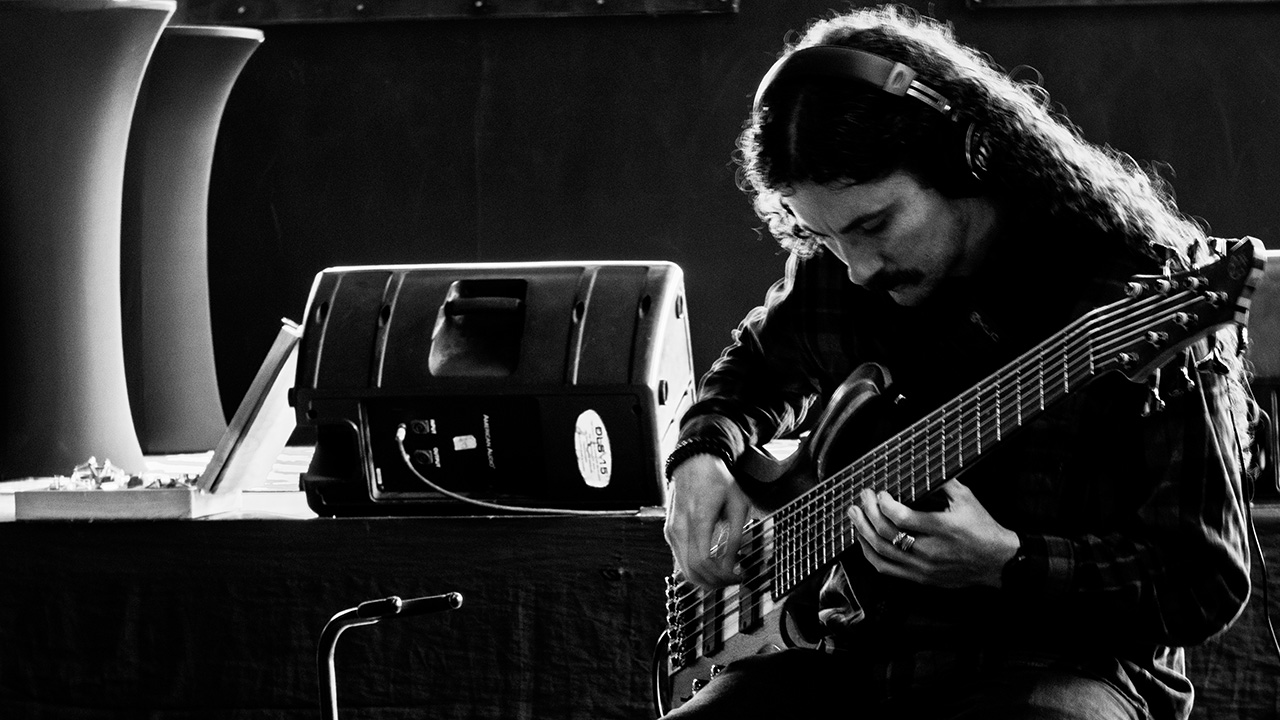“I never have to think about strumming patterns – it’s all taken care of because the motor is always going”: Cory Wong is the modern king of funk guitar – he shares his tips for tightening up your rhythm playing
The maestro of contemporary funk shares what he learned from Nile Rodgers, the classic chord you won’t find in guitar books, and why guitarists have to leave some room for the audience’s imagination

As one of the most respected players working in funk right now, Cory Wong is widely regarded as the Nile Rodgers for the next generation. He explains how to make sure you stay right in that pocket and reveals the chords that can get you through any musical scenario…
Your right hand is often described as a motor – always ticking along even in between the notes you play…
“What I noticed early on is that a lot of things feel easier when all the downstrokes are on the beat or on an ‘and’. And all the ‘e’ and ‘a’ notes are played using an upstroke. If I live by that philosophy, that means my right hand is just pulsing 16th notes the whole time. I’m just deciding what to hit the strings, which strings to hit, how many notes I’m actually fretting or whether to just play scratches.
“I never have to think about strumming patterns – it’s all taken care of because the motor is always going. And even if the rhythm has a lot of pauses and rests, it sounds less jerky because my internal subdivision is always ticking. If my brain is counting every 16th note and I’m only playing eighth notes, I will play tighter.”
Because there’s less margin for error…
“Exactly. Players who are only thinking in eighth notes might have more leeway to speed up or drag, because there’s more space between eighth notes. Give yourself twice the amount of precision. I always try to think of one subdivision deeper.”
Another part of your playing is how you hint at chords instead of playing every note…
All the latest guitar news, interviews, lessons, reviews, deals and more, direct to your inbox!
“That’s something I’ve learned from people like Nile Rodgers. He won’t play the full chord, even though he’s got the full Emin7 grip on his left hand. That way, even if he hits more strings than he planned to, it’s always going to be the right note. But he generally focuses on picking only the upper few strings. Prince did that a lot, and he’s my favourite rhythm guitarist. The idea is to give only the amount of information that’s needed from you.”
Nile Rodgers won’t play the full chord, even though he’s got the full Emin7 grip on his left hand. That way, even if he hits more strings than he planned to, it’s always going to be the right note
Which is one huge difference between a funk ensemble and a rock power trio, right?
“Yup. In a lot of bands I play with, there might be keyboard players, plus a horn section, maybe even another guitarist. All of a sudden there’s a lot of information happening in a lot of different ranges which can interfere with each other. If we’re just jamming on a C7, I might just play a root and a flat seven – like the C on the first fret of the second string and the Bb on the third fret of the third string. I’ll do that instead of the whole shape.
“On its own it can sound like a weird, clashing two-note thing. But in the context of a big band and wider arrangement, it suddenly sounds really cool. The dissonance is what makes it interesting, people will go, ‘Oh, what’s that?!’ When I first started out playing rock music in trios, I was responsible for taking up space – that’s the point of it. But in a funk band, you don’t need all that pressure on yourself. The role is different.”
That lets listeners fill in the blanks themselves, too…
“I could give away more information, but it’s cooler – especially with instrumental music – to let the listener interpret it for themselves. Leaving space invites the listener into the music. You can make the listener a part of your song and they will connect to it even more if they’re allowed to use their own creativity and imagination in the song.
“A perfect example is the interval of a 10th on guitar, it sounds so cool and interesting. Just listen to a song like (The Beatles’) Blackbird, which is a root and a third but the third is up an octave. They are far enough apart for your ears to almost hear the notes in between! Our minds fill in the blanks.”
Your chord knowledge is extensive. Which ones do you find yourself using most?
“There are three realms of chords for me. Think of it as three trees: major, minor and dominant, and each one has three branches. So in G the major tree will have Gmaj7, G6 and Gmaj9. Those are the ones I play the most. For minor, I have Gm7, Gm6 and Gm9. To me, Gm7 is the classic Nile chord and all you have to do is play a regular fifth-string rooted minor chord and take your pinky off.
“With dominant, I mainly think about G7, G9 and G13, though I also like G7#11 and G9#11 because they sound interesting. If you learn these chord shapes, there’s a lot of mileage right there.
“One thing I got hip to later on is sus chords like Gsus9. It’s funny, in Vulfpeck we always call it the ‘classic’ because you hear it in Earth, Wind & Fire, Michael Jackson and D’Angelo. It’s a very piano-like voicing that you won’t find in a lot of guitar books, but I use it all the time!”
- Lucky One is out now.
Amit has been writing for titles like Total Guitar, MusicRadar and Guitar World for over a decade and counts Richie Kotzen, Guthrie Govan and Jeff Beck among his primary influences as a guitar player. He's worked for magazines like Kerrang!, Metal Hammer, Classic Rock, Prog, Record Collector, Planet Rock, Rhythm and Bass Player, as well as newspapers like Metro and The Independent, interviewing everyone from Ozzy Osbourne and Lemmy to Slash and Jimmy Page, and once even traded solos with a member of Slayer on a track released internationally. As a session guitarist, he's played alongside members of Judas Priest and Uriah Heep in London ensemble Metalworks, as well as handled lead guitars for legends like Glen Matlock (Sex Pistols, The Faces) and Stu Hamm (Steve Vai, Joe Satriani, G3).


